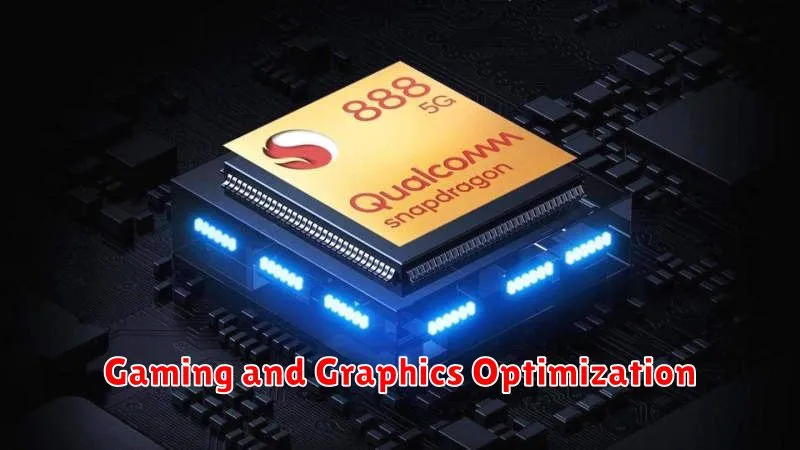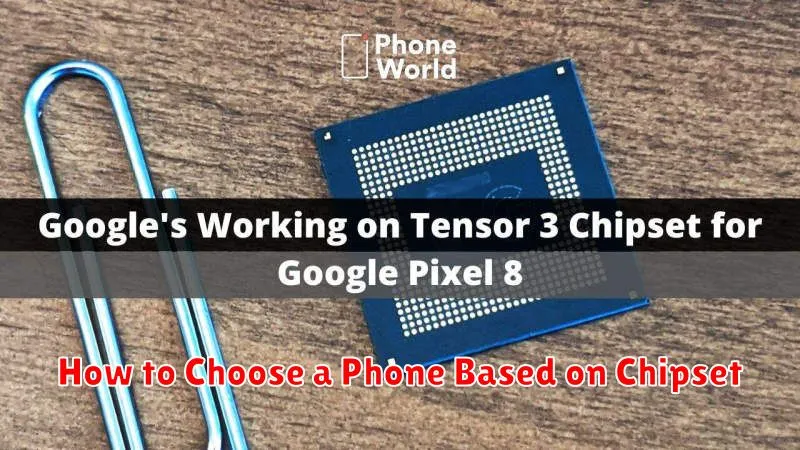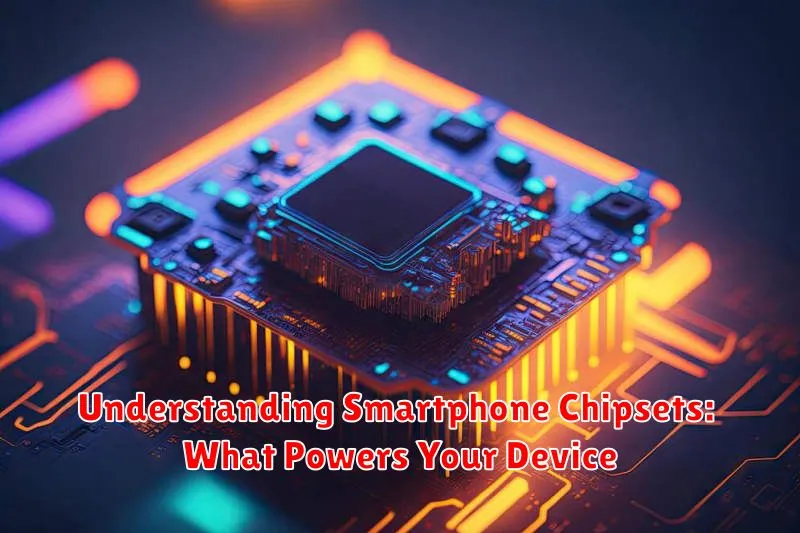Have you ever wondered what makes your smartphone tick? The answer lies within the chipset, a complex piece of technology that acts as the brain of your device. Understanding smartphone chipsets is crucial to comprehending the performance, capabilities, and overall user experience of your phone. This article delves into the intricacies of these powerful components, exploring their architecture, key features, and how they impact everything from app responsiveness to battery life. We’ll decipher the jargon surrounding SoC (System on a Chip), CPU, GPU, and other essential elements, empowering you to make informed decisions when choosing your next smartphone.
From the casual user to the tech enthusiast, grasping the significance of smartphone chipsets can significantly enhance your appreciation for the technology you interact with daily. Whether you’re looking to understand the difference between a Snapdragon and a MediaTek processor, or simply curious about what the latest chipset advancements mean for your mobile experience, this guide will provide a comprehensive overview. Explore the fascinating world of smartphone chipsets and discover the true power behind your device.
What Is a Smartphone Chipset?
A smartphone chipset, often referred to as the System on a Chip (SoC), is the central hub that powers your device. It’s essentially the brain of your smartphone, coordinating and controlling various functions.
Think of it as a miniature computer packed onto a single integrated circuit. This integrated circuit contains several crucial components, including the Central Processing Unit (CPU), the Graphics Processing Unit (GPU), the modem for cellular connectivity, and more.
The chipset dictates the overall performance of your smartphone, influencing everything from how quickly apps launch to how smoothly games run and how long the battery lasts.
CPU vs GPU in Mobile Devices
Within a smartphone’s chipset, the CPU (Central Processing Unit) and GPU (Graphics Processing Unit) play distinct yet crucial roles. The CPU acts as the “brain,” handling general processing tasks such as running apps, managing the operating system, and executing instructions. It prioritizes efficiency and handling a variety of operations.
In contrast, the GPU is a specialized processor designed for handling graphics-intensive tasks. It excels at parallel processing, making it ideal for rendering images, videos, and 3D graphics in games. This focus allows for smooth visuals and complex graphical effects, offloading this workload from the CPU.
The Role of AI in Modern Chipsets

Artificial intelligence (AI) is playing an increasingly vital role in modern smartphone chipsets. Dedicated AI processing units, often called NPUs (Neural Processing Units), are now commonplace. These specialized hardware components accelerate AI tasks, enabling features like on-device voice recognition, real-time language translation, and enhanced computational photography.
AI contributes to improved power efficiency. By handling specific tasks more efficiently than a general-purpose CPU, NPUs reduce power consumption. This leads to longer battery life and less heat generation, essential factors for mobile devices.
Furthermore, AI enhances user experience. Features like predictive text and personalized app recommendations are driven by on-device AI processing, leading to a more intuitive and tailored smartphone experience.
Popular Mobile Chipset Brands
Several key players dominate the mobile chipset market. Understanding their strengths and weaknesses can help you appreciate the nuances of smartphone performance. Some of the most prominent brands include:
Qualcomm Snapdragon
Known for their high-performance processors often found in flagship devices, Snapdragon chipsets generally offer a balance of processing power, graphics capabilities, and power efficiency.
MediaTek
MediaTek focuses on providing chipsets across a wide range of devices, from budget-friendly smartphones to more powerful mid-range options, emphasizing value and affordability.
Apple Bionic
Exclusively designed for Apple devices, the Bionic series of chipsets are known for their tight integration with iOS, leading to excellent performance and optimization.
Samsung Exynos
Primarily powering Samsung’s own smartphones, Exynos chipsets often offer advanced features and compete with other high-end processors in terms of performance.
HiSilicon Kirin
While less prevalent recently, HiSilicon Kirin chipsets were prominent in Huawei devices, showcasing competitive performance and often incorporating advanced AI capabilities.
How Chipsets Affect Performance
The chipset is the heart of a smartphone, significantly impacting its overall performance. It dictates how efficiently the device handles various tasks, from launching apps to playing graphically demanding games. A powerful chipset translates to a smoother and more responsive user experience.
Key aspects of performance affected by the chipset include processing speed, graphics rendering, battery life, and connectivity. A higher clock speed generally means faster processing, while a more advanced GPU delivers better gaming and multimedia experiences. Efficient chipsets also contribute to longer battery life. Furthermore, the chipset influences the device’s network capabilities, including support for the latest cellular and Wi-Fi standards.
Efficiency and Battery Life
Chipset efficiency directly impacts battery life. A more efficient chipset consumes less power, allowing your device to run longer on a single charge. Efficiency is influenced by the manufacturing process (measured in nanometers – nm). Smaller process nodes generally lead to greater efficiency.
Power management features within the chipset also play a crucial role. These features intelligently allocate power to different components based on usage, further maximizing battery life. For example, when the device is idle, the chipset can downclock the CPU to reduce power consumption.
Gaming and Graphics Optimization

A crucial aspect of chipset performance relates to gaming and graphics processing. The GPU (Graphics Processing Unit) is a specialized electronic circuit designed to rapidly manipulate and alter memory to accelerate the creation of images in a frame buffer intended for output to a display device. A powerful GPU translates to smoother gameplay, higher frame rates, and more detailed visuals.
Modern chipsets often incorporate advanced graphics optimization techniques. These can include features like adaptive refresh rates, which adjust the screen’s refresh rate dynamically to match the content being displayed, saving power and enhancing smoothness. Dedicated gaming modes prioritize processing resources towards games, minimizing background tasks and optimizing performance.
5G Support and Connectivity
A crucial aspect of modern smartphone chipsets is their ability to support 5G connectivity. Different chipsets offer varying levels of 5G support, impacting download and upload speeds, as well as network compatibility. Modem integration within the chipset plays a key role in determining 5G capabilities.
Some chipsets offer support for sub-6 GHz 5G, which provides broader coverage but lower peak speeds. Others support mmWave 5G, delivering incredibly fast speeds but with limited range and obstacle penetration. Advanced chipsets support both, enabling the device to dynamically switch between them based on network availability.
Future Trends in Mobile Processors
The future of mobile processors promises even greater performance and efficiency. AI processing will continue to be a major focus, with more powerful and specialized neural processing units (NPUs) integrated into chipsets. This will enable more sophisticated on-device AI capabilities, impacting everything from photography to personal assistants.
Power efficiency remains a key concern, driving innovation in chip design and manufacturing processes. We can expect to see further advancements in process nodes, leading to smaller and more power-efficient transistors. This will translate to longer battery life and improved thermal management in mobile devices.
Finally, the integration of 5G connectivity directly into the chipset is becoming increasingly common and will continue to evolve. This will lead to faster data speeds, lower latency, and a more seamless mobile experience.
How to Choose a Phone Based on Chipset

Choosing a smartphone based on its chipset requires understanding your needs and the chipset’s capabilities. Consider your typical usage. Casual users primarily using their phones for communication and basic apps may find entry-level chipsets sufficient. Gamers or those who use demanding applications like video editing software will need a high-end chipset for smooth performance.
Research different chipset brands and models. Compare benchmark scores, which offer a quantifiable measure of performance. Pay attention to the CPU, GPU, and AI processing capabilities. The CPU impacts general performance, the GPU affects graphics rendering, and the AI processor enhances features like camera performance and voice assistants.

